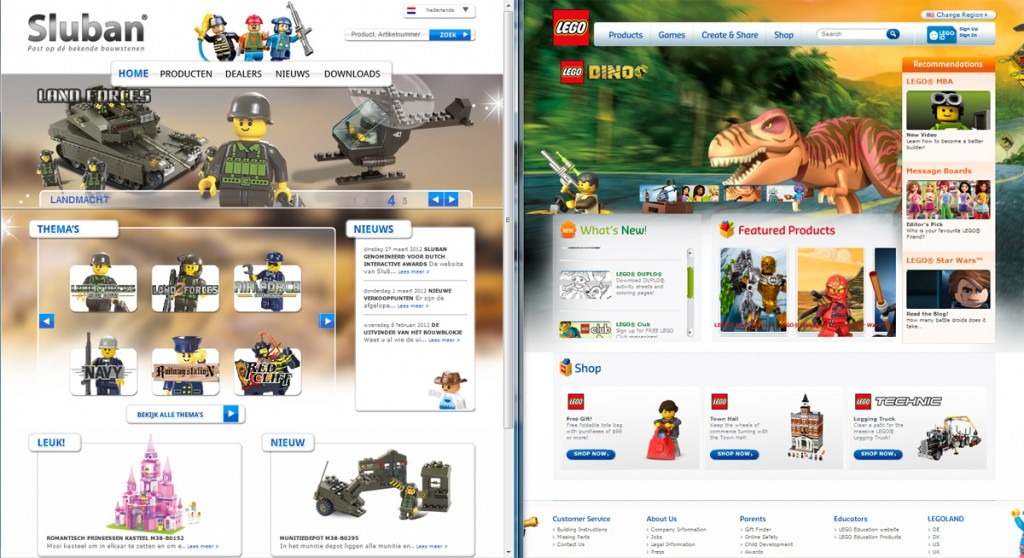*Positioning
LEGO positioning and brand strong enough to withstand competition?

LEGO’s brand is undoubtedly one of the few toy brands that consistently maintains a high-quality positioning. For years, LEGO was the sole provider of the iconic bricks, and the question “Who hasn’t grown up with it?” is entirely fitting. However, alternatives to the familiar bricks have emerged recently. One of these alternatives is the brand Sluban (www.sluban.nl). This alternative seems to offer a similar product at a considerably lower price. LEGO has, of course, made legal attempts to prohibit this “copycat” product. Apparently, this has not been successful.
Our fascination with the LEGO brand led us to focus on this wonderful brand in our podcast:
LEGO positioning
The brand name LEGO comes from the Danish phrase “leg godt” (“play well”) and was started in 1932 by Ole Kirk Christiansen, developing the product based on a patent for “Automatic Binding Bricks” from England. It wasn’t until 1958 that they succeeded in translating their vision of a creative toy system into a patent. Father and son Christiansen built the company around one statement: ‘the best is never too good,’ and quality is still one of the company’s cornerstones. The bricks from the company’s early years are still compatible with the current ones.
The products from Sluban, originating from China, are part of a series of copycat products that emerged after the expiration of LEGO’s last patent and are built to the exact dimensions of LEGO bricks. The different systems all fit together, although Sluban is of much lower quality. (Source 1 & Source 2) Also, in terms of marketing, Sluban is based on LEGO; the similarities between the websites, for example, are quite evident. An obvious example of this is that they repeatedly refer to “bricks that fit on the famous building blocks.”

Vergelijking tussen de Sluban and LEGO websites
Like the isopod lives in large numbers at the expense of the humpback whale, a number of parasites have gathered around the LEGO brand. In nature, it is always a ‘higher’ organism that is parasitized by a ‘lower’ organism, and that seems to be the case here as well. But what makes LEGO the higher organism in this story?
LEGO’s merk en positionering
LEGO regards its brand as a responsibility. They feel responsible for the expectations people have of their products. LEGO’s core values have remained the same over the years and include imagination, creativity, fun, learning, caring, and quality. They want to make a positive difference; for example, the theme of ‘war’ is out of the question at LEGO, and they prefer adventure. It is this combination, connecting the organization’s identity with behavior, that LEGO can use to maintain and expand its position.
The fact that we call Sluban a parasite, and not even one of our frequently used penguins, has no moralistic basis. But the fact that Sluban fails to sustainably differentiate itself from its ‘host’ LEGO means that it cannot establish a distinctive positioning in the market. This symbiosis with LEGO is also finite, as there will undoubtedly be a stronger parasite to come. The English proverb teaches us that “There’s always a bigger fish,” but fortunately for LEGO, they are, like the humpback whale, the largest for the foreseeable future.